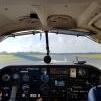Flight Control Pushrod Corrosion
-
Members Online
- Ragsf15e
- jsclafani
- EricJ
- BlueDun
- Lptoro
- IvanP
- acekng1
- natdm
- EKoS
- rturbett
- Joe Linnebur
- aviatoreb
- kowabunga
- Brad B
- dkkim73
- Greg Ellis
- N201MKTurbo
- WilliamR
- Rwsavory
- Niko182
- Shadrach
- Schllc
- tbone40x
- bhtitle
- Glen S.
- FlyingDude
- 00-Negative
- MikeOH
- SoKYMooney
- alexz
- ta2too
- takair
- hubcap
- Justin Schmidt
- Rmnpilot
- FastGlasair
- ragedracer1977
- TCC
- RoundTwo
- Bike_rider
- 0TreeLemur
- tim417
- McMooney
- richardbrochu27


Recommended Posts
Join the conversation
You can post now and register later. If you have an account, sign in now to post with your account.